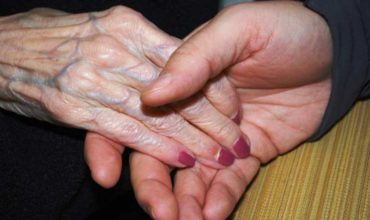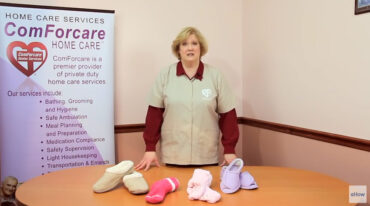Although the operation is considered to be very safe there are some risks and complications as with any medical procedure that you should always be aware of and talk to your doctor about the risks and complications before the procedure. This may contribute to a safer recovery and identify complications earlier.
Risks related to anesthesia such as reaction to the anesthesia, heart attacks, strokes, pneumonia and blood clots in the legs. The older you are and the more medical issues you have may contribute to these risks. Blood clots in the legs can occur after the surgery and may take several days after surgery to appear accompanied by swelling and pain in the legs. The clots can be dislodged and go to the lungs causing shortness of breath, chest pain and in worst cases death. Getting out of bed after surgery and moving around will help to decrease the risks of clots in the legs along with physical therapy. You may be asked to wear special stocking or take blood thinners, such as Coumadin (warfarin), Pradaxa (dabigatran), or Lovenox (enoxaparin) for a short period after the surgery to decrease the likelihood of forming these clots.
Other possible complications include:
Adverse effects of anesthesia and post-operative analgesia include the following:
• Intense Itching sensation
• Hypotension
• Urinary retention
• Nausea
• Vomiting
• Airway Problems due to intubation
• Epidural hematoma (rare)
• Bilateral sensory and motor block
Risks related to any type of surgery such as: Infection, deep where surgery took place or, at the skin level at the site of the incision. If the infection involves the replaced hip it may need to be removed. Bleeding either during or after the operation that may require transfusion. Scarring may occur that can be painful or unpleasant in appearance. Proper care of the wound after surgery may prevent some scarring and aid the healing process.
Risks specific to this type of surgery:
- Infection is important to note. Areas in the wound or around the new joint may get infected. Infections can happen during the surgery, after the surgery while still in the hospital, or long after the surgery is completed. Minor infections in the wound are usually treated with drugs. Deep infections may need a second operation to treat the infection or replace the joint (see Revision Surgery).
- Organs close to the surgical area may become damaged in the process including the arteries and veins in the leg.
- Patellar tracking problems can occur where the knee cap does not properly move along the groove in the femur as designed.
- Ligamentous Instability can occur if the ligaments of the knee become unbalanced, stretched, cut, or injured due to the nature of the knee as a joint.
- Nerves going to the leg may become damaged in the process decreasing sensitivity and cause weakness in the limb.
- Mechanical failure. The replaced joint may become loose or detached from the adjoining bone or, if there is a mobile bearing, the prosthesis may become dislocated from the socket.
- A difference in leg length may occur due to the prosthesis or angular deformity “bow-legged” appearance.
- Stiffness in the joint area that may feel abnormal.
- bone fracture of the femur or tibia
- Bone loss (osteolysis)
Serious Side Effects and Adverse Events
Some of the more serious adverse events after surgery include:
- Blood Clots. There is an increase in the likelihood of blood clot formation in the lungs (Pulmonary Embolus or PE) and the lower leg and thighs (Deep Vein Thrombosis or DVT). The doctor may suggest drugs to make your blood thin or special stockings, exercises, or devices such as venous foot pumps or compression devices.If swelling, redness, or pain occurs in your leg after you leave the hospital, contact your doctor right away.
- Acute myocardial infarction
- Pneumonia
- Deep wound infection as noted above
- Deat
Despite the success rate of so many knee replacements a year, some knee replacements eventually fail for multiple reasons and may require additional surgery to be replaced called “revision”. The length of time your current replacement lasts depends on multiple factors as well. The longevity and performance of a knee replacement depends on several factors, including your activity level, weight, and general health.
Revision surgery may require special components. Typically they will have longer stems which fit into the femur and tibia. They may also have attached metal pieces called augments which substitute for missing bone. Revision components often have a cam in the center of the knee similar to a posterior stabilized component. In revision components, though, the cam is larger to give the knee more stability. In cases where the knee is very unstable and a large amount of bone is missing, it may be necessary to join the femur and tibia with a metal “hinge” in the center.
A study published in 2010 reviewed the data in the U.S. for all total knee arthroplasty revisions performed between October (2005) to December (2006). The published data was based on 60,355 revision surgeries and included the type of procedure (whether it was all component revision or if revision focused on a particular component) and the diagnosis of the cause of failure of the device that led to revision.
The causes included:
- Mechanical loosening
- Implant failure/breakage
- Periprosthetic fracture
- Periprosthetic osteolysis
- Bearing surface wear
- Other mechanical complication of prosthetic joint implant
- Other mechanical complication of other internal orthopedic device implant or graft
- Infection
The greater portion of these revisions were “all component” revisions where each piece of the prosthesis was replaced followed by complete removal of the prosthesis. Male patients were more likely to have revision surgery than woman with the most common causes of revision were infection, mechanical loosening, or implant failure or breakage.
By Dr. Mario Trucillo American Recall Center






